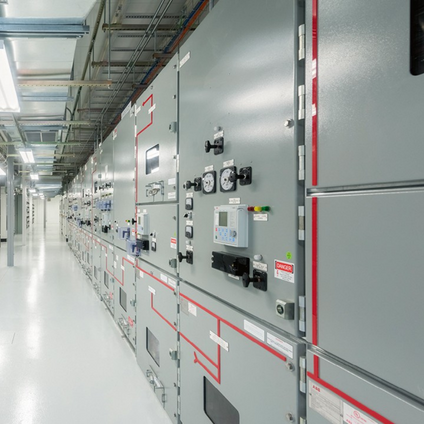Unveiling the Heart of Energy Distribution: Smart Evolution of Transformer Substations

Unveiling the Heart of Energy Distribution: Smart Evolution of Transformer Substations
In our previous blog, we marveled at the breathtaking complexity of electrical networks and delved into the pivotal role played by transformer stations in advancing towards intelligent infrastructures. As we pondered on enhancing efficiency and optimizing security and maintenance through the remarkable collaboration of AI and IoT, our focus now shifts to understanding the basics of a transformer substation and exploring some practical energy efficiency applications. Let's dive in!
Transformer Substation Overview
Transformer substations are essential facilities that convert high-voltage energy from transmission lines into low or medium currents. Typically located outdoors, these substations receive energy from one or multiple high-voltage lines, transform it through one or more circuits, and distribute it to end-users. The term "transformer" signifies the conversion of electricity through coils to regulate the current. Electrical energy is generated in power plants and adjusted by raising or lowering voltage levels in transformer substations for efficient distribution.


Types of Transformer Substations
Transformer substations are commonly categorized into two types: Open Air Substations and Gas-Insulated Substations. While Open Air Substations are suitable for expansive areas, Gas-Insulated Substations are preferred in more confined spaces. These substations play a crucial role in converting electrical energy, making it suitable for everyday usage by lowering voltage levels and reducing conductor sizes to minimize costs.
Components of Closed-Type Substations
Closed-type substations house various components, including power transformers, bus elements, insulators, protection devices, control elements, grounding systems, modular cells, LV(Low-Voltage)panels, MV(Medium- Voltage) panels, substation lighting, ventilation systems, and fire extinguishing systems. Transformers serve as the cornerstone, and other components play essential support roles. For instance, the coordinated functioning of all structures is crucial to address issues like lighting or potential fire incidents effectively.
Operation of Transformer Substations
Transformer substations operate by gradually reducing the voltage of electrical energy. In case of malfunctions, a procedure known as the "Ring" is activated to transfer energy to another substation, ensuring continuity of service while addressing the issue. High-voltage electrical energy is transformed within these substations, and their proper isolation is critical due to the high voltages involved.
Integrating Technology for Efficiency
Advancements in computer and communication technologies have contributed to a decrease in the cost of distribution networks. Supervisory Control And Data Acquisition (SCADA) systems enable the remote control of transformer stations, facilitating measurements of electrical quantities, issuing system commands, implementing load sharing in transformers and lines, and optimizing load distribution to minimize losses.
In conclusion, transformer substations stand as the backbone of energy distribution. Understanding their operations and integrating technological advancements are crucial steps towards achieving efficient and sustainable energy transmission. As we navigate the depths of this ocean-like transmission network, we strive to uncover the pearls that lie within.
